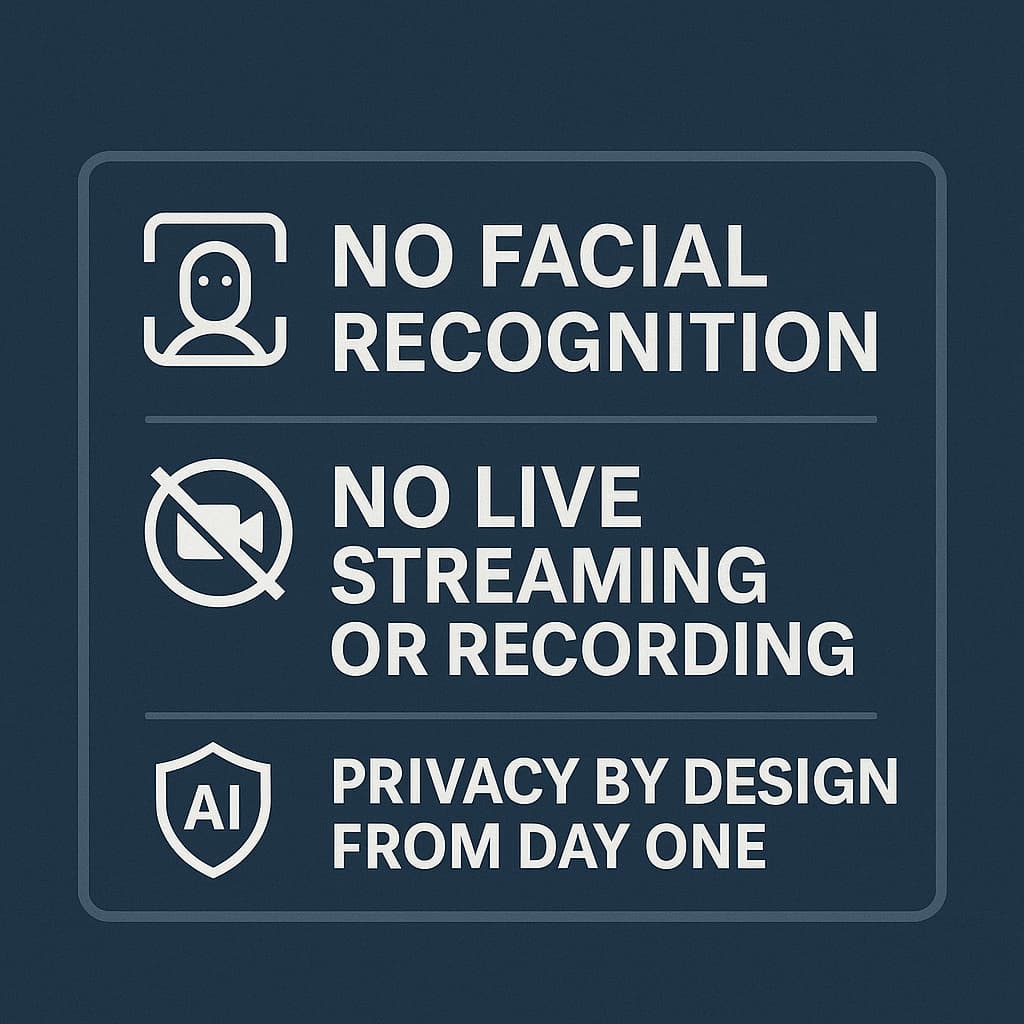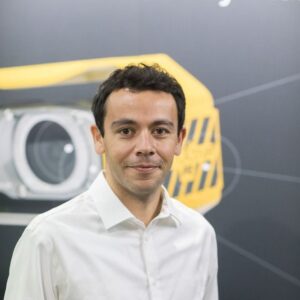Ensuring GDPR & CCPA Compliance with AI Safety Cameras
As AI-powered safety systems become more common in industrial environments, concerns about worker privacy and data protection are rising. HR, compliance, and legal teams want reassurance that new technologies—especially those involving cameras—do not record personal data, cannot identify individuals, and meet strict privacy regulations.
This guide explains how Blaxtair’s AI safety camera is built with privacy-by-design, detecting pedestrians in real time without recording, storing, or transmitting identifiable data. With Blaxtair, safety and privacy are fully compatible.
The Growing Challenge: Privacy Meets Workplace Safety
Organizations across the U.S. and Europe face increasing pressure to improve workplace safety while maintaining full compliance with privacy laws. Common concerns include:
- Whether safety cameras record workers during normal tasks
- How images are processed, transmitted, or stored
- Whether AI systems introduce new surveillance risks
- How employees will perceive the technology
- Whether compliance requirements will delay adoption
If privacy issues are not addressed early, procurement can slow down—even when the solution reduces serious risk.
Blaxtair resolves these concerns by ensuring that no personal data is collected in the first place.
Understanding What Blaxtair Actually Sees (and Stores)
Blaxtair is not a CCTV system, and it does not record continuous video. Instead, the system uses AI to analyze images in real time for pedestrian detection and risk assessment.
Here’s how the system works with GDPR-compliant image handling:
- Real-time detection: The sensor analyzes images instantly to identify pedestrians and high-risk situations.
- Local picture storage: Blaxtair can capture and store still images locally when a risk event occurs. These images are not blurred by default, but access is strictly protected by a password-protected interface, ensuring GDPR compliance.
- No continuous video: Blaxtair does not stream or record video under any circumstances.
- Optional cloud upload: Customers can choose to send some event images to the Blaxtair cloud dashboard for analysis (never video). These images can be blurred automatically if the customer enables this feature.
- Automatic deletion policies:
- Clear (non-blurred) images: deleted automatically after 3 months
- Blurred images: deleted automatically after 12 months
- Purpose-driven capture: Images are captured only to analyze high-risk pedestrian events and improve site safety—not to monitor individuals.
This design ensures that even when pictures are stored, Blaxtair stays fully aligned with GDPR principles.

GDPR & CCPA: What the Laws Require from Vision AI
Lawful basis for processing: safety as legitimate interest
Regulations such as GDPR allow employers to use AI systems when needed to prevent accidents, protect workers, and maintain a safe environment. Collision avoidance fits squarely within this category.
Data minimization: no more data than necessary for risk detection
Blaxtair captures only the minimum data required for risk analysis.
This means:
- No video
- No biometric identification
- Only still images related to genuine risk events
- Local image access restricted through password protection
- Automatic, time-bound deletion of images (3 or 12 months)
Data minimization is essential to GDPR and CCPA compliance, and Blaxtair adheres to it by design.
Transparency: workers must be informed about use and purpose
Employers must inform workers that:
- Blaxtair analyzes images for safety
- Some images may be stored temporarily for risk analysis
- Images may be blurred when uploaded to the cloud dashboard
- All images are automatically deleted according to GDPR-aligned retention rules
- No video, no biometric identification, and no productivity tracking occurs
Clear communication ensures workers understand that pictures are collected only for safety, not surveillance.
No biometric identification or profiling
Blaxtair does not perform facial recognition, identity matching, or behavioral profiling—meaning it avoids the strict biometric restrictions within GDPR.
CCPA: limited applicability due to Blaxtair’s non-identifiable use; no “sale” of personal data
Because Blaxtair does not handle personal information, CCPA obligations such as access requests, deletion rights, and “do not sell” rules do not apply.
Privacy by Design: How Blaxtair Aligns with Global Compliance
Blaxtair incorporates strict privacy principles:
- On-device AI detection reduces unnecessary data use
- Still images stored locally only when needed for risk analysis
- Password-protected access prevents unauthorized viewing
- Optional cloud upload with customer-controlled blurring
- Automatic image deletion:
- 3 months (clear)
- 12 months (blurred)
- No facial recognition, no biometric processing
- Detailed documentation supports GDPR/CCPA audits and DPIAs
These features ensure that storing pictures never compromises compliance.

Informing and Protecting Workers
Clear communication ensures workers understand the purpose of AI safety systems and helps organizations demonstrate regulatory transparency.
Recommended steps include:
- Provide a simple worker notice describing Blaxtair’s purpose and stating that no video is recorded.
- Use signage to inform workers the vehicle is equipped with real-time pedestrian detection.
- Train operators and supervisors on how alerts work and why the system protects everyone.
- Offer multilingual materials in diverse workplaces.
Sample Worker Notice
“This vehicle uses an AI-powered safety system to detect pedestrians and prevent collisions. The system does not record, store, or transmit any video or personal data.”
Steps to a Privacy-Ready Rollout
- Conduct a Data Protection Impact Assessment (DPIA):
Blaxtair’s no-data architecture significantly simplifies DPIA requirements.
- Inform employees & display proper signage:
Transparency avoids misunderstandings and reduces resistance to new technology.
- Set retention and access policies (especially with Blaxtair Connect):
While Connect stores no personal data, organizations should still define how aggregated risk data is reviewed and who can access dashboards.
Conclusions
AI safety cameras are essential for preventing accidents, but compliance concerns can slow adoption. Blaxtair solves this challenge with a privacy-by-design approach that ensures:
- No video recording
- No personal data
- No biometrics
- No surveillance risks
Organizations can strengthen safety while meeting GDPR, CCPA, and global privacy standards—all without compromising worker trust.
See how privacy-first AI improves workplace safety.
FAQs
Is Blaxtair recording or storing footage of employees?
No. Blaxtair does not record or store video footage.
However, the system can capture still images associated with risk events. These images:
- Are stored locally in a password-protected environment
- Are used only for safety analysis
- May be uploaded to the customer’s cloud dashboard (if enabled)
- Can be blurred automatically based on customer preference
- Are deleted automatically after 3 months (clear) or 12 months (blurred)
This approach maintains full GDPR and CCPA alignment.
Can this be used to track employee behavior or performance?
No. Blaxtair does not monitor individual workers or track personal performance.
However, the system does help improve site-wide productivity by reducing incidents, near-misses, and operational downtime—always through purpose-based risk detection, never through worker surveillance.
Is a DPIA required to install this system?
In many cases, yes—especially in the EU.
Blaxtair supports DPIA documentation with clear technical details that simplify the process.
